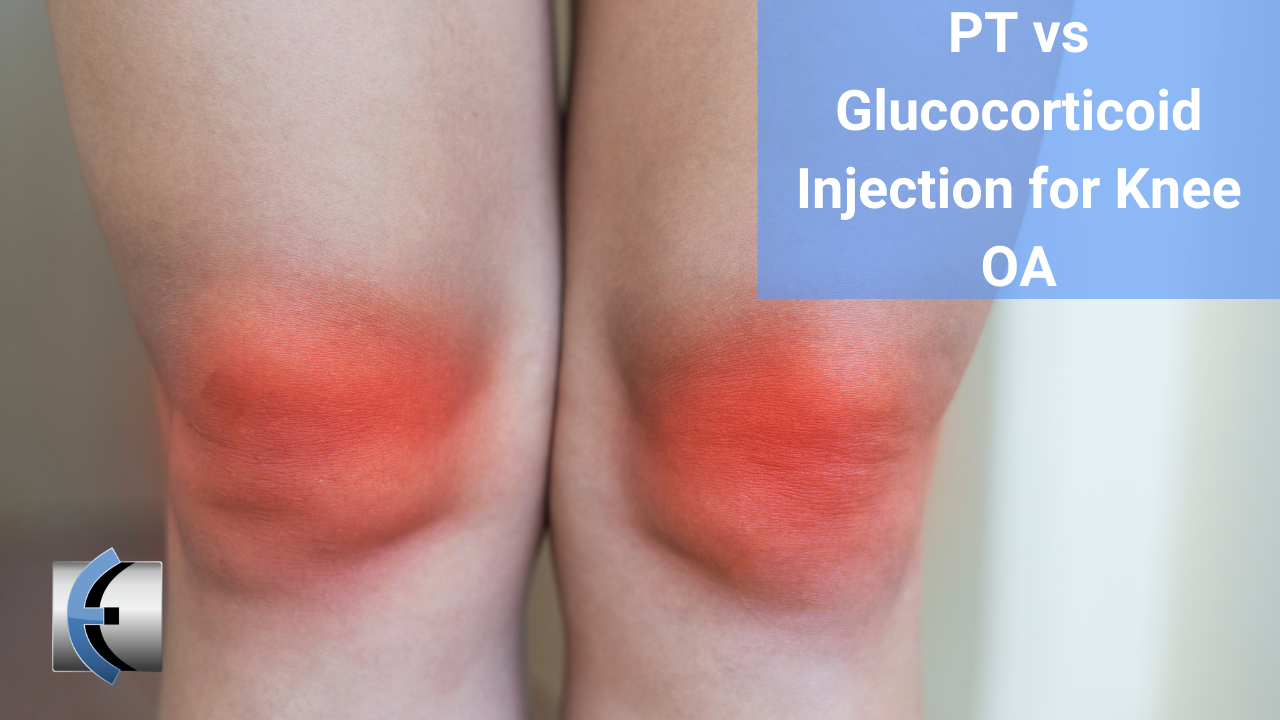Deyle GD et al. Physical Therapy versus Glucocorticoid Injection for Osteoarthritis of the Knee. NEJM: 2020
- Glucocorticoid injections are “strongly recommended” for knee OA based on recent clinical practice guidelines. Physical therapy and lifestyle changes are also considered primary treatments for knee OA.
- Use of glucocorticoid injections b/w 2007-2015 are on the rise (38%, 50%, 43.% of patients from 3 large population studies), while use of PT during that same time period has been on the decline.
- The aim of this study was to compare the effectiveness of glucocorticoid injections with that of physical therapy for patients with osteoarthritis of the knee
- Inclusion criteria included pts who met the clinical classification of knee OA from the American College of Rheumatology and had radiographic evidence (weight-bearing views) of Kellgren-Lawrence grades I-IV
- Participants were excluded if they had received an injection within the past year or if had no radiographic evidence of knee OA.
- 156 pts were included in the study with 78 randomly assigned to each group. Baseline demographic and clinical characteristics were similar b/w both groups.
- Participants could receive up to 3 corticosteroid injections over the 1 year trial. Patients in the PT group underwent up to 8 sessions in the initial 4-6 week treatment period but then could attend an additional 1-3 sessions at the 4 and 9 month reassessments if plan was agreed upon b/w PT and patient.
- PT intervention included manual therapy (joint and soft tissue mobilizations), active exercise, and education on exercises and clinical reasoning for dosage and progression of treatment.
- Primary outcome measure was total WOMAC score assessing pain and function. Secondary outcome measures included the Global Rating of Change scale which measures pt perceived improvement, and two functional tests: the TUG and Alternate Step Test.
- A change of 12-16% on the WOMAC is considered clinically significant. A score of +3 or higher on GRC is considered clinically meaningful, and estimates for meaningful changes for TUG range b/w 0.8-1.2 seconds. There is no published data for the Alternate Step Test.

